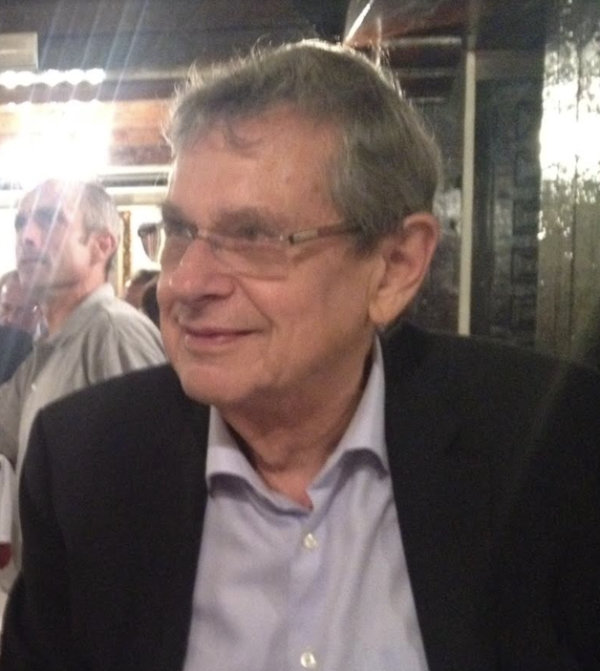Active 1987 - 2014; Emeritus 2014; Recalled 2014 - 2022
After graduating from CalTech, Forman A. Williams taught as an assistant professor at Harvard.
In 1964 when Professor Sol Penner established the engineering program at UC San Diego, he invited some of his top students to be part of the Applied Mechanics and Engineering Science (AMES) Department, now known as Mechanical and Aerospace Engineering. Dr. Williams was one of those top students and has taught and done research for more than 60 years here at UCSD. He served as Department Chair for the then, AMES department. At that time under Dean Bob Conn, the school was in discussions to create the Structural Engineering and Mechanical and Aerospace Engineering departments. There were two faculty members, Frieder Seible in structural engineering and Juan Lasheras in mechanical and aerospace, that attributed to the departments' success - which Dr. Williams was grateful for their strong leadership.
After his appointment as Department Chair, Dr. Williams' returned to focus on teaching and research, noting that administration was not his strongest suit. His research focused on the fundamentals of combustion. Understanding the implications - everything from gas turbine power plants to internal combustion engines for automobiles. Some notable faculty members he collaborated with are Sol Penner, Paul Libby, Kalyanasundaram Seshadri, Antonio Sanches, and Carl Gibson. He reflects that coming to UCSD was excellent. It was small; and he likes small things. He was more involved in the graduate work and research, but taught both graduate and undergraduate students throughout his career. Mathematical methods in engineering was the main course he taught and as the years went on, they added more and more students to the class. He enjoyed teaching, even so in a less formal way. Sometimes in summer, he would take a blackboard to the beach and lecture there, other times he would take the blackboard to the grass areas outside Urey Hall.
In 1978 Princeton University, where he did his undergraduate studies, offered Dr. Williams the prestigious Robert H. Goddard Chair. He was at Princeton for seven years where he taught and continued his research. Dr. Dan Olfe was the Mechanical and Aerospace Engineering Department Chair at the time and asked Dr. Williams to return to UCSD. After serious thought, Dr. Williams decided to leave Princeton and return to UCSD - one of the reasons was the mild San Diego weather and friendly camaraderie of colleagues. He was glad to come back with Paul Libby and others, noting it was a good group to work with, and recalls the people were very nice. He also adds, "The Jacobs School is a good place. People get along with each other, they help each other. He finds that more here than in other places. We work together and we do a good job together."
Reflecting back, his greatest contribution is in the energy combustion area. Dr. Williams was the director of the Center for Energy and Combustion Research, which has now evolved into the Center for Energy Research (CER). He helped build the faculty and student body, particularly the graduate students for the center. Dr. Williams has received many prestigious awards, one of them, the highest recognition from NASA. He is also a member of the National Academy of Engineering and other prestigious institutions.
Asked if he had any advice for current faculty he said, "Things are changing. We are becoming more practically orientated. My advice would be don't ignore the fundamentals, don't ignore the need to advance the need for scientific understanding. That is the origin of our department and how we evolved. Don't let that go away."
One reason for retiring is that teaching and lecturing to large groups of undergraduates became more and more difficult and less enjoyable, and he realized he does much better 1:1 with graduate students. Dr. Williams was recalled to UCSD to continue his research and still attends faculty meetings. He also works 1:1 with other faculty members' graduate students. At this time, his main research interest is in Cool Flames & Ammonia Combustion - one of his most interesting works is his research on cool flames in the International Space Station.
Besides going to his office to work on research and consult with students and colleagues, he works out three to four times a week. He used to travel often, but less so since the COVID pandemic. He enjoys happy hour with his wife and social gatherings with family and friends. Sometimes he sits at the piano and plays his favorite pieces, and lately has become an aficionado of James Patterson's books. He and his wife have children from previous marriages and eleven grandchildren who live around the world. Two of them are currently studying at UCSD, a granddaughter in Oceanography and a grandson in Chemistry.
